Hoornse Vaart
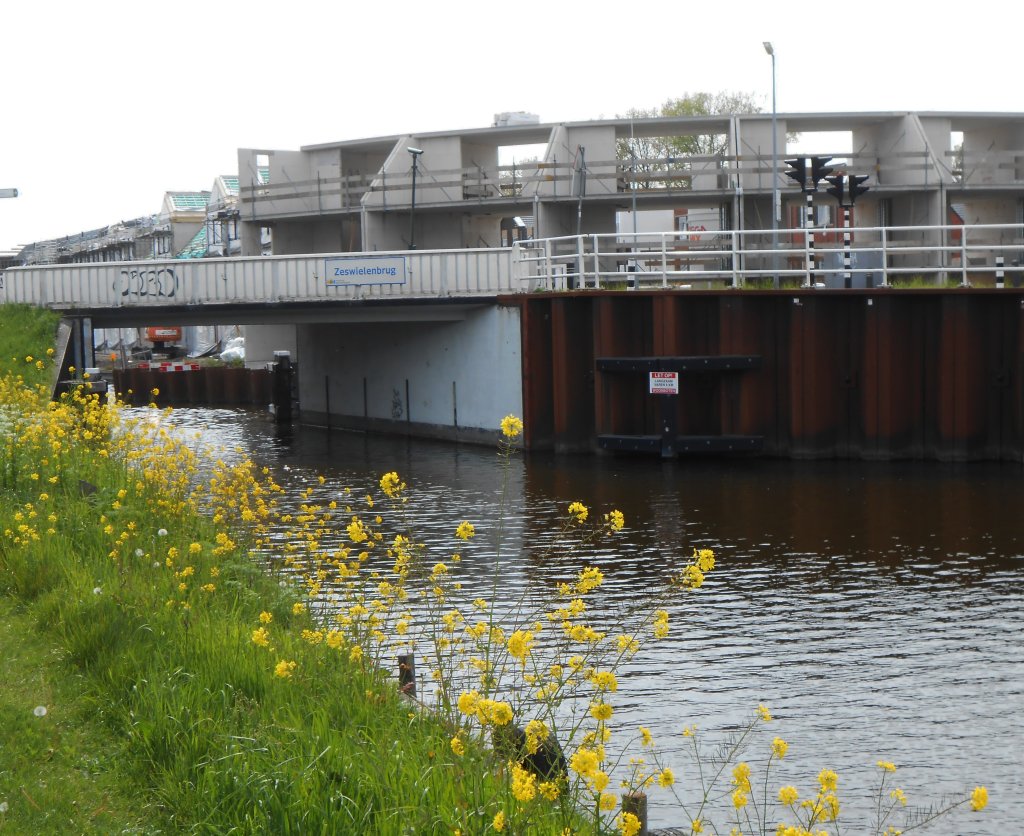
We are standing on the water of the Hoornse Vaart. At the site of the bridge, which lies on the route of the Omringdijk, there used to be a lock. In fact, there was a level difference.
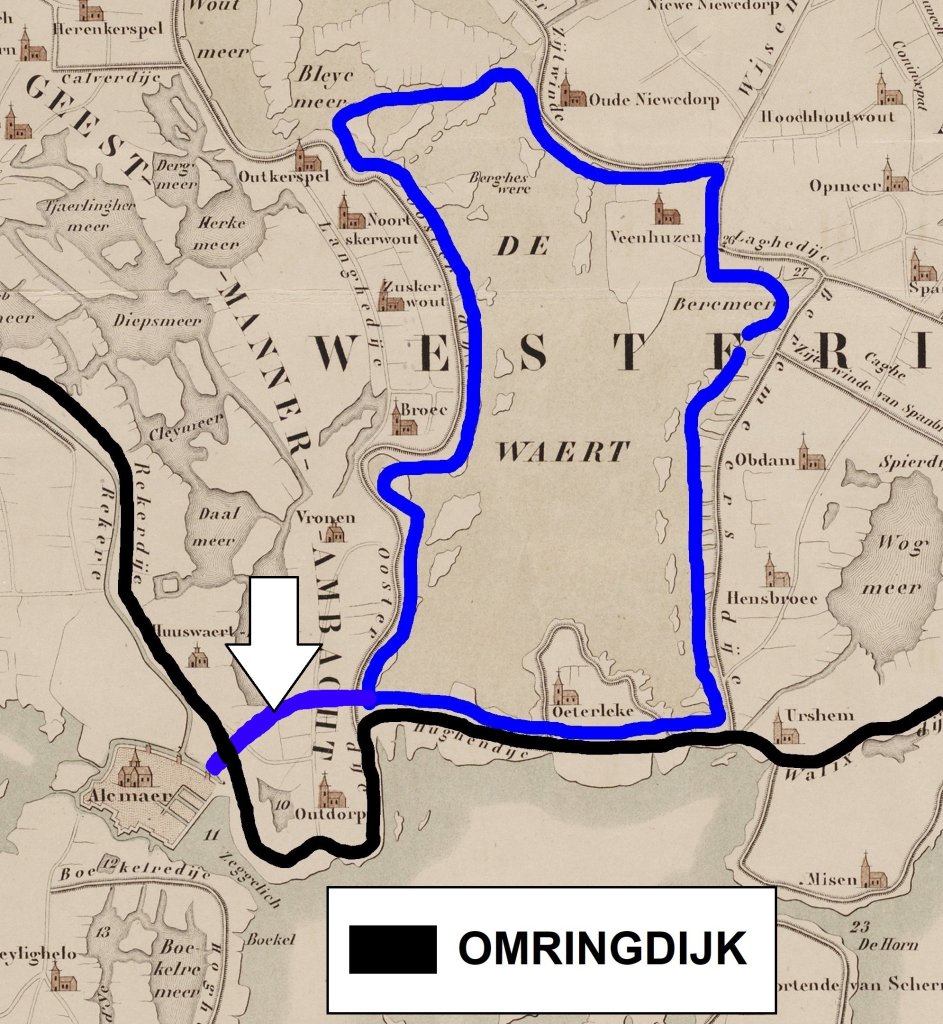
The Hoornse Vaart (arrow on Map) was dug as a result of the reclamation of the Heerhugowaard lake (1629-1631). This was an important drainage point until it was drained in the Golden Age like other lakes. Water drainage from the polders henceforth took place via the ring ditch that ran around the drained Heerhugowaard (dark blue).
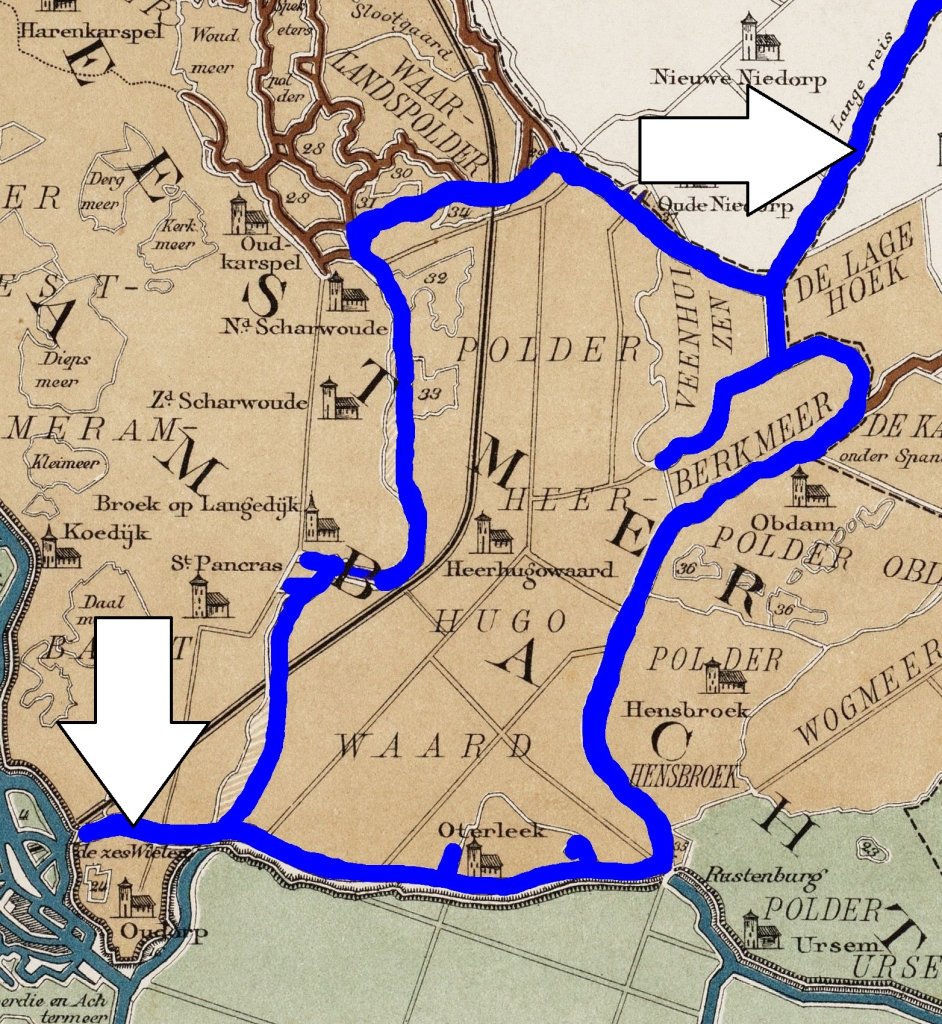
From a large lake to a ring ditch: a drastic reduction in drainage capacity. It was therefore necessary to compensate with water outlets for the ring ditch. In the north the canal the Langereis (arrow above right) serves for this purpose, here in the south among others the Hoornse Vaart (arrow below left). The Langereis ran to the Zuiderzee, the Hoornse Vaart runs to the Noordhollandsch Kanaal (until 1824 still the Hondsbossche Vaart), which is part of the water system the Schermerboezem.
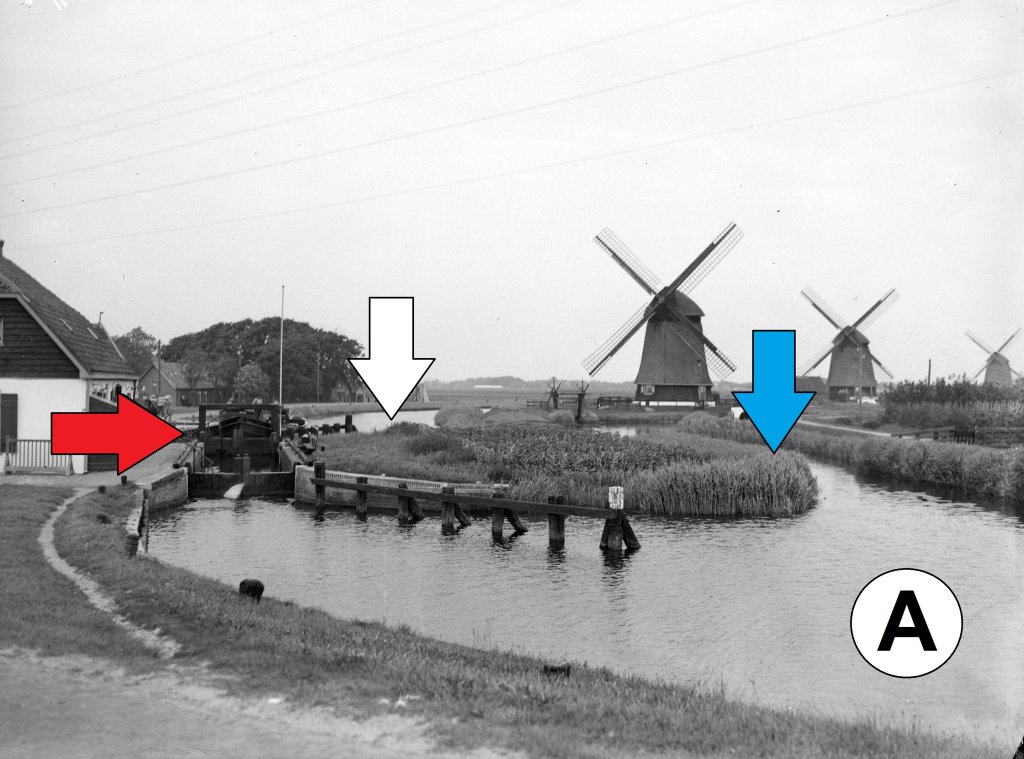
The water could not flow directly to the Noordhollandsch Kanaal, because the Schermerboezem had a higher level. Hence the lock halfway along the Hoornse Vaart (red arrow on the photo). So the water had to be drained by a detour and to this end the Heerhugowaard polder had six mills built between 1627 and 1630. Four are still standing today. They milled from the canal (white arrow) into a gully (blue arrow). From there the water could flow away on the other side of the sluice into the Schermerboezem (A). You are standing on the spot of the blue arrow.
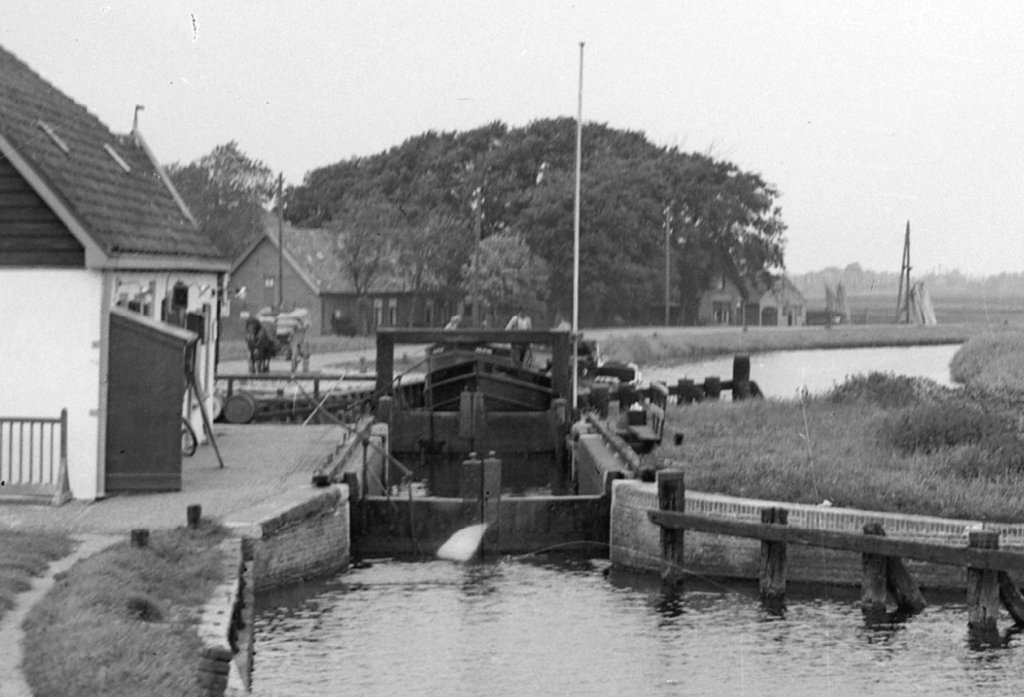
Ships got bigger and heavier, but the lock did not grow with them. In the 1930s, part of the Heerhugowaard's ring ditch was incorporated into a new canal. The canal connected to the North Holland Canal via the Hoornse Vaart. The water level difference was eliminated. This was possible because both the ring ditch and the canal had been widened. The lifting meant that the lock, the mills and the kolk were redundant. The lock was removed, the kolk filled in.
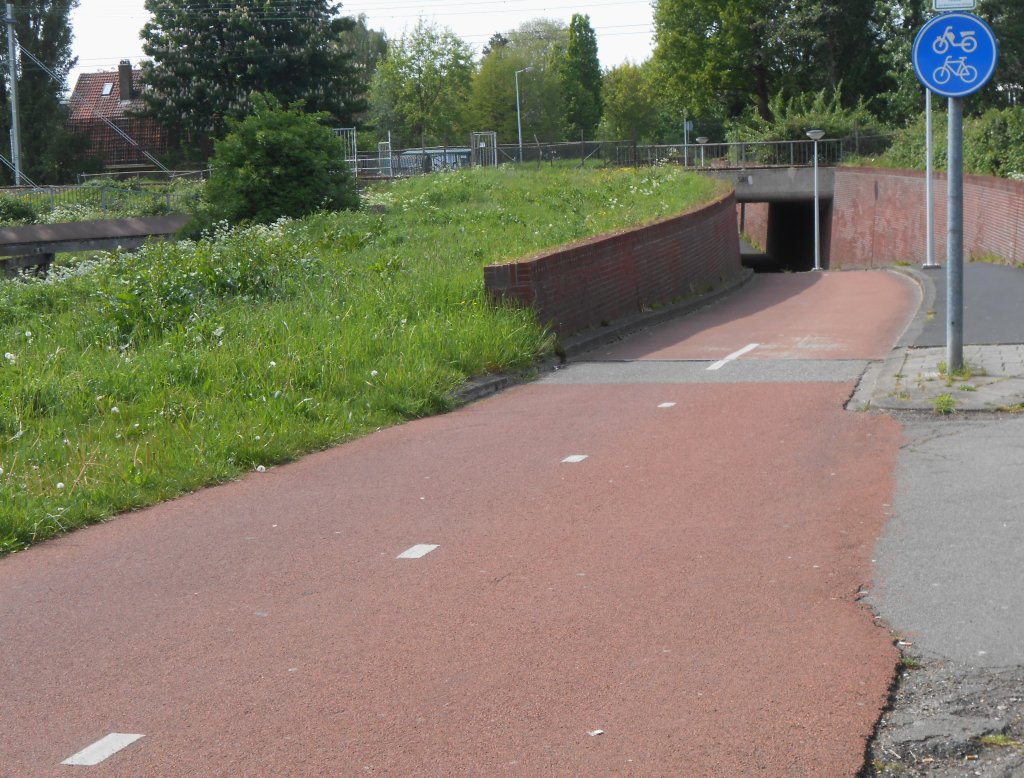
The Omringdijk runs through the bridge. To the north it continues under the name Rekerdijk. Today it is no more than a bicycle path through the residential area of Huiswaard (photo), but between roughly 1200 and 1550 it protected against the river Rekere. The river has long since disappeared, but its course outside Alkmaar is quite similar to that of the Noordhollandsch Kanaal.
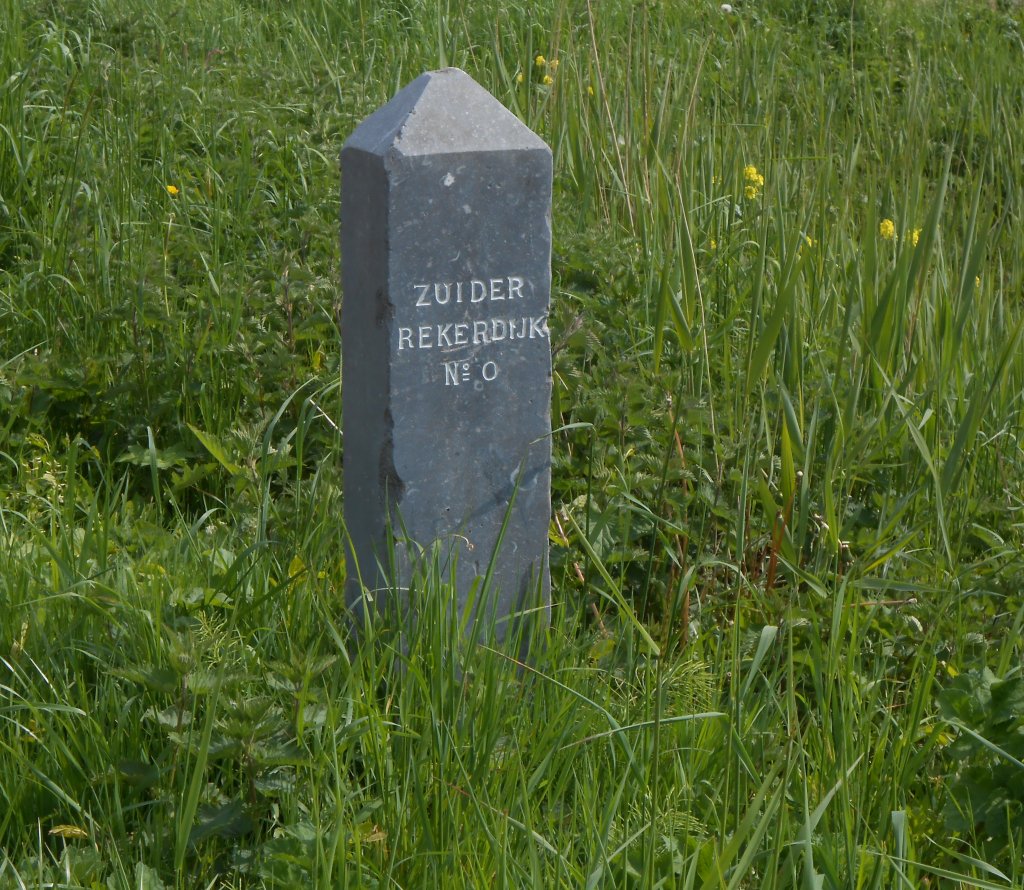
At the beginning of the Rekerdijk stands in the grass a stone dike post from 1871. Such posts marked the sections into which a water board divided the dike. Because of the former river, the old center of Alkmaar lies outside the Omringdijk - not that it was necessary to include Alkmaar within the dike. In fact, the city lies on the remains of a prehistoric beach ridge.